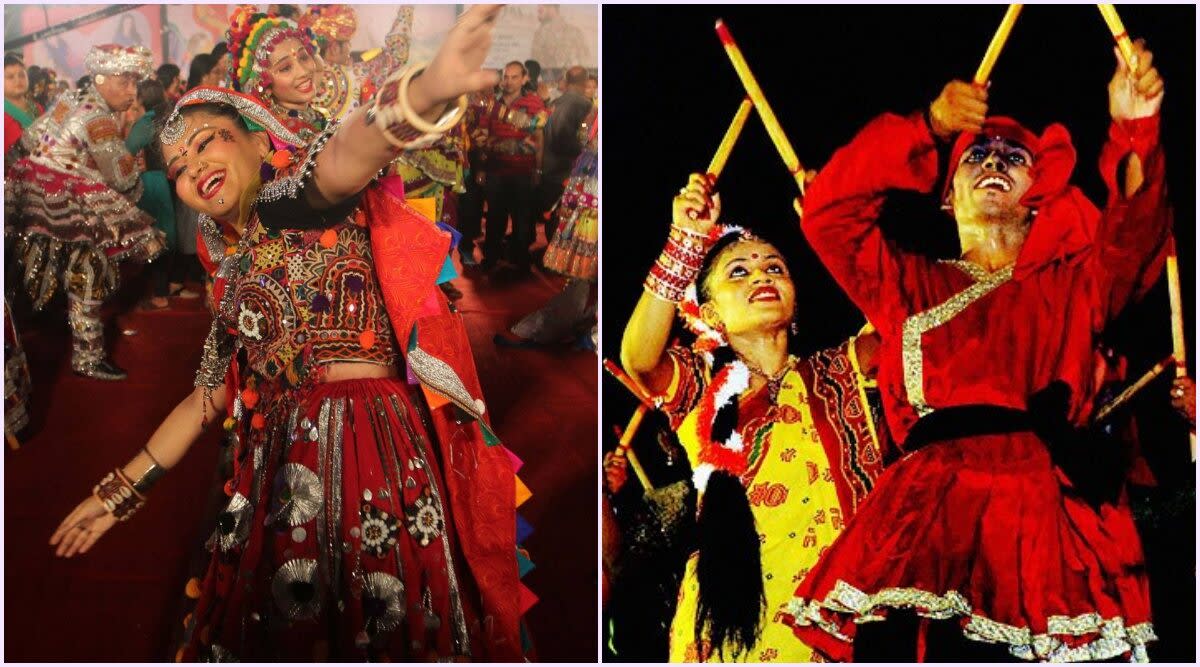What is The Difference Between Garba and Dandiya? Know Why The Two Dance Forms Are Performed During Navratri

The nine-day festival of Navaratri is almost here. Starting tomorrow with Ghatasthapana, the festival will go on till October 25, which is the celebration of Dusshera. The festival of Navratri is marked in different ways by people of different communities all across India. One of the traditions of these celebrations include performing Garba and Dandiya dance. People in Maharashtra and Gujarat have large scale Garba and Dandiya events. But what exactly is the difference between these two dance forms? Do you know why they are performed during the Navratri festival? In this article, we tell you all details about these traditional and cultural dance forms. Navratri 2020 Dates & Colours for Facemask: Day-Wise List of Navaratri Colour Code For Nine-Day Festival of Goddess Durga.
Difference Between Garba and Dandiya
To understand the difference, we would have to look into the deeper meanings of these forms. Garba is derived from Sanskrit term Garbha which means womb. Traditionally, the dance is performed around a clay lantern with a light inside, called a Garbha Deep ("womb lamp"). It is a representation of life, the fetus in the womb in particular. The dancers surround it and dance to honour the feminine form of divinity. The cyclical movement around is symbolic of cycle of life, death and rebirth. The Goddess is symbol of unending and infinite movement.
Dandiya sees both men and women energetically dancing with colourful sticks. The striking of sticks to one another and the instruments played around forms a music to perform. This dance is said to be a recreation of battle that took place between the Devi and the demon.
Why is Garba/Dandiya Performed During Navratri
Garba and Dandiya, both dance forms have originated in Gujarat. Navratri is said to be a depiction of nine-day battle between Goddess Durga and the demon king Mahishasura, in which the Goddess emerged victorious. The festival is thus celebrated with an idea of the triumph of good over evil. Both these dance forms are symbolic of devotion and merriment for the festival. Navratri 2020 Song 'Madhmithu Naam' by Falguni Pathak: Watch Latest Romantic Song Video to Brighten Up The Festive Season.
On a larger perspective, Garba has more of a devotional appeal whereas Dandiya is performed as merriment after the aarti is done. The real essence nowadays is to celebrate the toegtherness everyone feels while they dance with their friends and family. It is a time of joy and happiness along with the devotion for Durga Maa.

 Yahoo Movies
Yahoo Movies 
